Read the free pdf (updated version of Jan 2018, 124 pages):
Black Death and Abrupt Earth Changes 02-01-2018 updated version
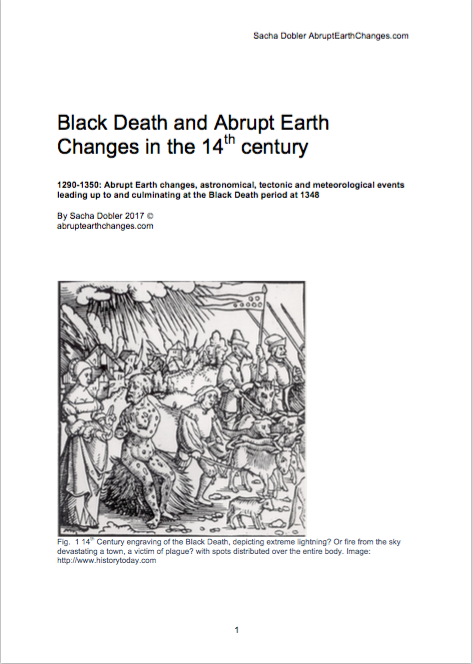
Black Death and Abrupt Earth Changes Jan 2018 pdf
Introduction:
The period from 1310-1350 saw the death of between 50 and 70% of the population of Europe and Asia, in some areas, the accumulated death toll of the years of the Black Death alone is believed to be in the 75 % range. It took more than 200 years for the population of Europe to recover to the previous numbers of the late 13th century.[1] Already in 1315 -1320, the decline in population coincided with natural disasters that led to crop failure, abandonment of farm land, and the Great Famine that killed about 30% of the European population.
The greatest loss of life is of course attributed to the Black Death pandemic of 1348-51, which is commonly believed to be the result of a contagious disease imported from the far east. Traditional models contend it to be bubonic plague, others suggest pneumonic plague, anthrax or small pox.
The period from 1290 onward saw severe climate change and astronomical anomalies, which culminated in the 1348 crisis. The events at this climax involved comet/meteor sightings, earthquakes, noxious gases from the air, from the ground and the sea.
In this investigation, we’ll examine the evidence for a wide range of geological and astronomical irregularities and their effects on society. It seems appropriate to distinguish between decades- long perturbations and the culminating abrupt changes directly before and during the pandemic.
-First, the changes that began to take place in the late 13th century, roughly from the 1280s to the 1340s, including cold, wet seasons and floods, alternating with droughts, the first cold spell that ushered in the Little Ice Age, meteor activity, earthquakes, decreased sun spot activity, reduction in tree growth, crop failure, agricultural collapse, famine, locust invasions, wars.
All of this was preceded by recorded volcanic activity in the mid and late 1200s.
Then I’d like to direct the attention to the changes that took place directly before and during the pandemic, and the sudden ramping up of some of the before mentioned phenomena: earthquakes, noxious gases, storms, meteor/ comet sightings, “fire from the sky”, floods, lightning events and other atmospheric electrical phenomena, erratic human behavior. You might be able to get an impression on why many people at the time believed the Biblical End Times had begun.
Dendrochronologist Mike Bailey caused an uproar in the scientific community pointing to the cometary activity in his excellent 2009 New Light on the Black Death. He had identified a global climate event in the form of a reduction in tree growth at the time. A comet was seen over Paris in August 1348 over Paris. In this text I will present many additional historical sources for celestial and geological upheaval in the immediate years of the 1348 crisis, but I will focus on the long term Earth changes and their astronomical connections including solar activity. Surely one comet or a comet swarm alone did not alter the solar emission? Clube and Napier note the mid 14th century as a period of high meteoritic activity .[2]
Meteorite impacts versus “invisible cosmically induced” changes
If cosmic factors are considered in connection with abrupt earth changes, the focus usually lies on kinetic impacts of meteorites or dust clouds. And indeed, for the Black Death period the eye-witness accounts are strongly indicative that celestial fall out was the main instigator of the climax in the human crisis of 1348.
But there are other sources of cosmic perturbations that leave much less of a finger print. Changes in solar magnetic field, modulating galactic cosmic rays, leave no craters, but can impact the stability of the biosphere dramatically, e.g. low sunspot counts and thus more cosmic ray influx are directly correlated to volcanic eruptions.[3]
Johannes Nohl (1926) spoke of the Black Death as a turning point that ushered in the renaissance.
It was only in 1980, when Luis Alvarez and his son provided the evidence for their hypothesis of a comet impact in the Yucatan peninsula that ended the era of the dinosaurs c. 65 million years ago, which is now well accepted knowledge.
As far as more recent episodes are concerned: the Younger Dryas Boundary event of c.10,900 BC – and the extinction of most large mammals in North America – is revealing its greater importance as new scientific findings have emerged (particularly since 2007, when new evidence for the Younger Dryas Impact hypothesis was presented)[4]. We are becoming aware, that this cosmically induced global catastrophe and its implications is of significance for the people of the present and the future as well.
Thus, the timespan around the Black Death may also serve as a demonstration of how public awareness of widespread extreme Earth changes (including coinciding anomalies in the skies) can be lost and forgotten in a few generations, and alternative explanations and theoretical models provided by academic consensus, are accepted as historical fact. At the same time, the eyewitness testimonies and chronicles are still publically available (backed up by geological data), making it possible to reconstruct much of the events of the time. For instance, geologist Christian Pfister explains how, after decades of severe cooling and extreme weather, wet and cool conditions led to “the absence of summer” in three consecutive years” before the onset of the Black Death.[5] Indeed, the people across Europe were referring not just to the three, but the four years leading up to the Black Death as the ‘four years without summer’ (see 3.1.2).
We will examine scientific data to demonstrate that many of the eye-witness accounts, however outlandish they may seem to the modern ear, can be backed up by empirical evidence such as climatological and geological data. Recorded anomalies include reduction of solar magnetic field and sunspot activity, increased volcanic activity, anomalous sedimentation, increase in CO2, increase in biomass burning (wildfires) and much more.
Symptoms of the disease(s) of 1348
Even at the time of the Black Death pandemic, a range of various possible causes were proposed, almost all of them were based on the perception of poisons, foul odors and ‘contaminated winds’ coming from the sky, from the ground and from the sea. These were said to be directly related to earthquakes and/ or meteors. The observation of “foul” drinking water supplies is most likely what led to the idea that ‘someone’ had poisoned the wells, which would only have been possible in some cities, considering the poisons available at the time. The Jews were accused of having done so, and executed in large numbers after confessions were extorted under torture.
In the early years of the pandemic, few seemed to have been concerned with person to person transmission of the disease, although there is an abundance of reports of people abandoning their sick loved ones. But this was apparently not because they were afraid of direct physical contagion. The idea of quarantine was introduced only at a later stage of the pandemic. However, Doctors did advise to stay away from corpses and to refrain from eating fish.
From the dozens of eyewitnesses and contemporary writers I present in this text, I found only one source that is believed to be unaltered, who explicitly claims the victims had ulcers under their armpits, others only describe ulcers or buboes distributed over the body.
Then we can compare these events to some well documented modern day examples of cosmically and geologically induced health effects. One is a meteor impact in Peru that caused a local health crisis from toxic fumes – fortunately only on a small scale (see 6.3.3) – and then there was the death of hundreds by outgassing from a lakebed in Cameroon (see 6.2.4). These events left almost no physical traces.
The study of this material may also serve to illustrate some aspects of the phenomenon which I call trauma induced collective amnesia, the tendency of societies to expel from conscious memory the awareness of an extremely dramatic, world altering event. The chronicles and historical accounts of severe Earth changes and natural disasters at the period in question are still publically available, yet most people cannot bring themselves to entertain the thought, that geologically and astronomically induced changes were responsible – either primarily or exclusively – for a dramatic population reduction by 50% or more in 35 years[6], and that this happened barely 700 years ago. After going through this text, some of the readers may ask themselves, how it is that they’ve never heard of these facts in the context of the Black Death? Or even, how is it they have never heard of these facts in the context of the current debate on climate change?
The many natural disasters of the time and their implications are simply brushed under the rug of history or at most they are believed to be mere co-factors that facilitated the spread of the disease. I will not provide an alternative single interpretation for the disease or diseases. Below we’ll see, we don’t even need a contagious microorganism to explain the health related high death toll considering the severity of geological and climatological upheaval. It seems that not only historians but also the public are far more comfortable with the concept of mass casualties by a single bacterium or virus than mass casualties by heavenly disturbances, geological and climatic upheaval. I’m not suggesting there were no bacteria involved; bacterial infections are expected as public health and standard of living declined abruptly, but the distinction between cause and effect, correlation and coincidence is by no means settled. The assumption of a single contagious agent as the main cause for a world altering crisis seems to be more comforting as it leaves some vague (even unfounded) hope that some day scientists will find a cure for all these transmittable diseases. In contrast, the prospect of a calamity that is primarily caused by a cosmic disturbance as the main instigator of a population reduction event, is far less comforting and few people are willing and able to deal with such things rationally and productively. But in fact, a well informed and responsible society would indeed be capable of preparing for potential repetitions of similar calamities and mitigate the effects thereof. And only a well informed and responsible society could.
In the interest of the concept of the ‘Renewal of life’, at the end of this text, I will touch on the exploration in the question, whether some if these phases of change, however directly devastating they turn out to be for many individuals at the time, could have an overall beneficial effect for the evolution of life and even human consciousness.
1300- 1350, the decades preceding the Black Death
1.1.1 The onset of the Little Ice Age
The early 1300’s did coincide with the first downward spike in temperature and the beginning of Alpine glacier expansion. The exact duration of the cold period known as the Little Ice Age is not settled. Climatologists generally refer to two dates of cooling associated with the Little Ice Age. Sirocko (2010) places the earlier event at the beginning of the 1310’s[7]. A more widely used time frame for the first cold phase is the coinciding solar minimum called Wolf minimum from 1280-1350[8]. There were repeated cold snaps and advancing glaciers and sea ice from that time onward, but it was not until the early 1600’s that the most devastating effects of the Little Ice Age began to set in, which is the more commonly used date for its beginning.
Various authorities propose up to seven different dates as the beginning of this cold period (See Fig. 13). What is agreed on, however, is that the Little Ice Age was the coldest period of time within the last 10,000 years (Holocene), we are still in the process of re-approaching average temperatures, that is, global temperatures are still below the baseline of the Holocene. In short, modern day global warming – if it continued, and continued gradually – would constitute an approach to more “normal” temperatures.
Shin Kim, (2007) wrote on the effects of the early climate downturn at around 1300: “Agriculture was greatly affected by increasingly irregular and excessive rainfalls. Half a century after the catastrophe of the Black Death, i.e. the late 14th century, trade routs were interrupted by an increase of sea storminess, and northern sea routs were restricted or completely cut off by increasing appearance of drift ice”.[9] This increased sea storminess has remained until today and thus at least some of the changes altered the Earth permanently.
Reconstructing weather and climate conditions
First, when we think of climate, we primarily think of temperature and precipitation over a certain time scale. This is a gross simplification, but it is usually suitable to measure and compare general long term trends. But to get the real picture, we must also take into account: short term distribution of precipitation, storms, variability of wind, cloud coverage and so on. For instance: a fertile, temperate region, with regular, moderate rain fall and an ambient temperature is in general suitable for human habitation including agriculture, but not if it is hit by ten severe hailstorms every year. Therefore, weather stability is just as important as the mean temperature and rainfall. But, available climate data sets usually show limited resolution and smoothed curves, this is true especially for reconstructed climate data from as far back as the 14th century, in times before exact instrumental temperature measurements were recorded. The weather conditions for these years are reconstructed from anthropologic data such as weather records, harvest records, indirectly confirmed by food commodity prices but also from tree ring data, geological data such as glacial conditions.[10] Not all of these markers allow for high resolution curves in temperature and precipitation; not all disasters such as storms and floods show up in this data and must be added from anthropogenic records. So, if the temperature and precipitation curves only show, for instance 5-year-means, the climate and weather in that time may appear relatively moderate when compared with other periods. But when there is enough high resolution data to reveal enormous variability and fluctuations in weather patterns, this smoothed curve of a 5-year-period may reveal itself as a time of turbulent and destructive weather. If there is a year of drought followed by a year of flooding, this will not show in a smoothed long term rain fall curve. And indeed, in decade by decade temperature graphs, the early 14th century does not show as an obvious extreme climatic downturn and is seldom used as an example for extreme climate change in pre-industrial times.
1.1.2 End of the Medieval Climate Optimum
Europe had been flourishing, agricultural and economical conditions were very stable at the time of the Medieval Climate Optimum.
Especially in northern Europe, “the period between 1150 and 1300 was truly a flowering period, for population reached unprecedented levels that were never to be seen again until the late 18th century in many countries; the English population experienced a staggering threefold increase in its population during the last century since the Domesday Survey in 1086”.[11]
This climate optimum (also called a climate anomaly) coincided with a period of increased solar activity (see below). Farming of various crops extended hundreds of kilometers farther north than it is possible today.
However, toward the end of this Climate Optimum, warm temperatures alone could not guarantee economic stability, as the weather became more erratic. “The warm period that had lasted for over two hundred years, also led to glacier ice melting and a slight rise in sea levels of up to 0,5 meters, which then contributed to a series of devastating floods in the Netherlands in the later 13th century”.[12] Storms and floods left a bigger impact on the coastline geography when the waters were higher, not to mention that storms were more frequent during this period.[13]
By the mid 14th century, grain production in northern Europe had dramatically fallen due to a “climatic cooling that had been under way from 1250 onwards” which eventually led to the “permanence of the cessation of farming after the Black Death in Norway“.[14]
In 2000, a well preserved cog was excavated in Belgium, its construction date was set at AD 1325/ 26. [15] It is unclear when exactly it was buried under several meters of sediment but the state of preservation suggests that the accumulation of sediment took place in a short time, which indicates a tsunami or extreme flood event such as the Great Flood of 1361.
1.2 The Great Famine 1315-1320
The favorable conditions and stable climate during the Climate Optimum led to agricultural expansion, forcing over- exploitation of the land when weather conditions started to worsen rapidly. Already beginning in the 1290s, farm land began to be abandoned and resources became scarce. The Great Famine had its most devastating impact in Europe from 1315 – 1320, it was primarily the result of crop failure due to excessive rainfall and cold temperatures. To make matters worse, cool and rainy summers were alternating with summers of droughts. The physical evidence of an increase in biomass burning is recorded for the years 1313-1319.[16] (See also Chapter 5.1.3).
Early agricultural crisis
Many scholars still hold on to the concept that it was the Black Death and the coinciding enormous population reduction that cause the agricultural crisis, starting in the second half of the 14th century. But as Kim Shin established in a dissertation about land desertion in Scandinavia”[17], drastic changes, not only in climate conditions but also in population distribution, had been taking place long before. So, as the climate began to turn more erratic shortly before 1300, this was accompanied by one humanitarian crisis after another. Here are some direct statements from Shin:
“(…) even though the Black Death is thought to be a primary factor that triggered the agrarian crisis, the Black Death in itself cannot explain the desertion of farmland that began in the early 14th century before (in England) the Black Death hit northern Europe in 1348.”
“(…) the Black Death, which was a single incident, in itself cannot explain the lengthy perpetuation of the deserted settlements and stagnating population considering how the population and settlements were exploding in the period right before 1300.”[18]
From Lamb, 1972: (…)“The consequences were severe not only in the northernmost Scandinavian countries but in other areas as well; populations in Oxfordshire and Northamptonshire, during the period before the Black Death, 1300-1350, seem to have decimated over twice the number of the people that had been killed by the Black Death”[19]
“In parts of Denmark and Norway, the desertion seems to have begun around 1320 and continued for two centuries.”.[20]
Pollen studies in sediments provide further clues on agriculture development when pollen of agricultural plants disappear and pollen of wild plants and non-cultivated trees regain dominance.
“In Scandinavia, and Norway in particular, a reduction in grain pollen has been recognized in the late Middle Ages”. A study conducted in Central Norway, clearly shows that corn cultivation experienced an abrupt crisis around 1300 while spruce pollen data seem relatively stable at the same time.
1.2.1 Death toll of the 1300-1350 crisis
In 1969, Philip Ziegler accepted an average plague death toll in Europe of about 33 percent, or between 20,000,000 and 25,000,000,
The period from 1300-1350 saw the death of at least 50% of the population of Europe. In China, where the Black Death is said to have originated, a loss around half of the population is attributed just to the Black Death alone (going from around 123 million to around 65 million). In the early 2000s, Benedictow presented an overall European population of around 80,000,000 and plague death toll of about 60 percent overall in Europe, which is a total of about 48,000,000 dead. [21]
We note, that the ultimate death toll is still controversial, most historians agree that the Great Famine of 1315 already claimed at least 30% of Europe’s population and then the Great Plague from 1347 onward, claimed at least another 30%. Assuming that the population couldn’t recover in just 35 years after the famine, the second event of mass casualties would take then 30% of the remaining 70%, amounting to a death toll of at least 51%; if we use Benedictow numbers, we arrive at 72% within just 35 years. In Southern Europe, specially along the coastlines, the situation was even worse. Speaking only of the 4 years of the Black Death, some scholars believe that “In Mediterranean Europe, where the plague ran for about four years consecutively, it was probably between 70 and 75% of the total population”.[22] In England, the death rate was estimated at between 45- 60%.[23]
A musician at the papal Court in Avignon, Louis Heylingen (sanctus) of Beeringen, writes about an even greater mortality in Avignon and the neighboring parts:
“(…) for at Marseilles all the gates of the city, with the exception of two small ones, are now closed, for there, four- fifths of the inhabitants are dead.” [24]
We’ll examine below what the proximity to the sea and the various accounts of foul odors emitted from the sea have to do with this distribution pattern. Also in Palestine, (costal) Gaza seams to have been hardest hit, Ibu Battuta, Abu Abdullah (1304-1368) reports he found Gaza “depopulated due to the prior outbreak there(…) only 60 to 80 notaries remained alive.”[25]
To put these numbers into perspective: WW II caused the greatest loss of human life in recent history. According to conservative estimates, about 60 million people were killed in World War II, which was about 3% of the 1940 world population (of about 2.3 billion). The German population suffered the greatest loss of people in proportion to population, the death toll is disputed to be between 4.2 million[26] and 7.3 million[27] civilians and military death, amounting to 6 – 10% of the German population.
So, proportionally, the Great Famine of 1315- 1320 alone killed 3 to 10 times as many people of the European population as did all of WW II. We may ask ourselves how the enormous death toll of the 1315 Famine is usually only marginally taken into account in the discussion of the Black Death period.
1.2.2 Two comets, famine and deluge
Geologist Rüdiger Glaser gives us the descriptions in the chronicles of Bad Windsheim (Germany, 1315) about unfavorable weather leading to crop failure and starvation in the years 1312-1315:
“Two comets were seen, and it was a wet Summer, great famine, so that in many places the people were forced to eat dogs, horses and even thieves from the gallows(…)”
The writer goes on to report the high price of cereal in the Waitland and exclaims that “it rained all Summer, great damage was done to humans, cattle and crop, to the memory of this great famine and Deluge, these verses were made(…)”[28]
Glaser makes no further mention of the ‘two comets’ as if they could not possibly be of any interest in the context of extreme weather events.
Climate disruption and starvation had a drastic effect on the population density of Europe:
“The number of founding of European cities per year remained very high until 1310. After this date, city founding ceased abruptly. Several wet-cold summers, including harvest failures in sequence made the population suffer and led to the first large, wide spread famine in 1315 and a pronounced population decline. In the north Atlantic, for the first time, sea ice was seen in front of Iceland, indicating the Golf Stream was weakening. After this, in large parts of Europe, cereal harvest declined markedly until 1318 and starvation dominated Europe from 1315 – 1320.” [29]
More comets
Already in the early 14th century, comets were reported and mentioned in connection with famine. The chronicler Thomas Short notes:
„In December (of 1312) a Comet, which continued a Month. (Functius places this Comet in [13]12.) Hunger compelled some to eat their own Children, and some stole other People to eat. “[30]
It becomes apparent that the event around the time of the outbreak of the plague cannot be investigated in isolation from astronomical and meteorological anomalies of not only the previous years but decades. A worsening of the weather in Europe can be identified beginning in the 1290’s, starting to escalate at the turn of the century. As we’ll see below, these weather anomalies correspond well with the reduction in solar magnetic output and an increase in volcanic eruptions.
Meteor swarm 1296
The volcanic eruptions also roughly coincide with the great meteor swarm impact in Velikii Usting (Russia) of 1296, as reported by the astronomer Krinow. But the stark increase in volcanic sulfur in the atmosphere (see 5.1.7) was preceding this event. At any rate, in the Velikii Usting event, eye-witnesses report that:
“there appeared over the town a dark cloud, and it was dark as the night (…) lighting kept flashing ceaselessly…Even the ground seemed to shake and sway continuously (…) clouds of fire arose and collided with one another, great heat coming from the lightening and thunder”.[31]
Further, Johann Nohl tells us of much cometary activity in the same years: in ‘The Black Death, A Chronicle of the Plague’, we learn that:
‘seven great comets’ between 1298 and 1314 were seen over Europe; one was of “awe-inspiring blackness”. Many reports of foul smelling “mists” appeared continually after seeing bright lights in the sky, followed by an outbreak of the plague.[32] Here “the plague” does apparently not mean the Black Death, but a previous pandemic or health crisis of whatever origin, that would coincide with the Great Famine of 1315- 1320.
1.2.3 1315 wars
Such dire times, that involve great population reduction events, are, needless to say, accompanied by war. Some of the battles in these conflicts are even historically connected to extreme weather. In retrospect, the easy conclusion is that starvation leads to struggle for resources and war. But the relationship between cause and effect turns out to be much more complicated.
The main conflict of the century, the Hundred Year’s War, was not to begin until 1337, but already in the 1310s, conflicts raged in Flanders, where Flemish cities rebelled against the French administration and took the count of Flanders hostage.
A military campaign against the Flemish rebels was initiated by Louis X of France in 1315, but excessively heavy rains of this summer forced him to retreat on reaching the Flemish border.[33]
Meanwhile in the British Isles, the Scottish, under the rule of Robert I, known as Robert the Bruce, rebelled against the English crown. He campaigned against Edward I, and defeated Edward II at the famous battle of Bannockburn in 1314. He re-established Scotland as a separate kingdom. It had only been in 1298 when William Wallace was defeated and executed by Edward I. If you happen to have seen the movie ‘Brave Heart’ (1998) you may recall that many scenes were shot in rainy weather. It turns out it wasn’t only a dramaturgical tool or proverbial Scottish weather, but the early 1300s indeed marked a time in which political and social upheaval coincided with increasingly erratic rainfalls and cooling.
Further, throughout the time of the Great Famine, Norway, Sweden and Denmark were involved in complicated power struggles.
In 1314, Ludwig of Bavaria and Duke Frederick of Austria went to war over the “double election” to the German throne.[34]
The members of the Swiss founding cantons gained independence from the Habsburg rulers in the decisive battle of Morgarten on November 15th, 1315.
The Swiss Confederation had only been founded in 1291. Earlier that same year, the Knights Templar lost their last strongholds in Israel and Syria and were forced to move their headquarters to Limassol on the island of Cyprus, and in 1303 they abandoned the Holy Land and returned to Europe.[35] In 1307, on a Friday the 13th, they were famously persecuted and arrested by the king of France.
Frank Sirocko, (2010) describes how ‘The large increase in population in the High mediaeval period led to exploitation of the soil, thus the yield of grains declined drastically from 7:1 (7 grains of harvest per 1 grain of seed) to 1:3. This period in Europe was viewed by contemporary researchers as the most significant climate event in the 2nd millennium. The Little Ice Age had begun. However, in the 1320s, Europe recovered to some extent from this shock, but the weather remained cool, even though without extreme anomalies. In the 1330’s, reports of severe earthquakes and increasing drought in China and the Mediterranean region became the norm. The years 1336 to 1338 brought huge swarms of locusts from Asia across Hungary into central Europe, they finally reached as far as the Rhine. “[36]
With earthquakes, flood, locusts, and falling stars, the people of the time connected the plague not only with Biblical end time prophecies, which does not require too much imagination, but also with the Ten Plagues of Egypt. The concept of poisons in the atmosphere was present in the minds of the people. In the words of J. P, Byrne:
“The final Book of the Christian Bible, known as the Apocalypse (Catholic) or the Revelations of St. John (Protestant) is a vivid and frightening description of the end of time, or eschaton. Much of the human race alive at the time is to be destroyed, not least by war, famine, and death, while seven angels pour vials of poison into the earth’s atmosphere. Coincidently, the chief explanation for the plague from the 13th through the 19th centuries was “corrupted” or poisoned air.” (…)“Well before the Black Death, people generated and read reports of unnatural (supernatural?) events including hailstorms and “rains” of fire, poisonous amphibians and reptiles, and deadly earthquakes and floods that leveled entire cities. Reports of – and then the appearance of – plague in 1347 seemed to fill out the picture.” [37]
While all of this upheaval is going on in the 1310s, including the Great Famine, Dante Alighieri completes his monumental Divine Comedy (Italian: Divina Commedia) it is a long narrative poem which he begun c. 1308 and completed in 1320, a year before his death in 1321. Roy Barzilai, author of “The Testosterone Hypothesis, writes:
“The global cooling of the fourteenth century, which caused mass starvation and the Black Plague, was preceded by Dante’s famous Divine Comedy, describing his journey through Hell (the Inferno) and Purgatory and finally to Paradise. This story, written in the early 1300s, is famous in world literature for its vivid portrayal of the punishment of sins in hell with an emphasis on poetic justice and the sin of sexual lust”[38]
By the way, Dante envisioned hell to be in a cavity that had formed when Lucifer fell onto the Earth, in the southern hemisphere, on the opposite of Jerusalem, crashed through the center and out the other side.
The later two parts of the book, Purgatorio and Paradiso, both end with the same word as Inferno: stele, or the stars.
It turns out, Dante did not have to look far for inspiration to envision horrific scenes of starvation, even though Italy – Dante died in Ravenna – was not hit as hard as central and northern Europe by the Great Famine. Hell was just outside his doorstep!
“ See BUONAGIUNTA there, from LUCCA’s Plains,
And yon’ pale Skeleton, with wasted veins,
By hollow Hunger wasted to a Shade(…).
(Purgatorio – Canto 24,V)
1.2.4 Arrows
The most consistent metaphor for plague was the arrow.
It was not by accident that Italian notary Gabriele de’ Mussis described plague as “sharp arrows of sudden death”: or that Flemish Abbot Gilles li Muisis celebrated the heaven-sent arrows that decimated the Mongol Tartars before striking Europe. Some Muslin poets also pictured plague as jinn-fired arrows.[39]
The Umbrian physician Gentile da Foligna (c. 1275-1348) suggested a celestial connection to the plague and claimed that among sin and retribution, ‘poisonous darts of God’ (as first described by Homer) lay behind the plague.[40]
Already seven centuries earlier, in the Justinian plague in 590 CE, Honorius of Autun described the Justinian Plague as “arrows falling from heaven.”[41]
If you have seen a large shooting star or small fireball streaking across the night sky, you might get the idea that someone who doesn’t know what it is, may call it an arrow from heaven or a dragon even.
Fig. 2 Black Death illustrated as an calamity involving arrows being fired by mystical beings (angels) from the sky (lightning?) and liquids being poured down by (God?) Image: http://slideplayer.com/slide/3517893/
Fig. 3 ”The notion of arrows representing a plague can be seen in a curious wall painting dating from 1355, in Lavaudieu, Haute Loire, in the Auvergne region of France. Image from: Mormando, F. 2007: Piety and Plague: From Byzantium to the Baroque. Thomas Truman State Univ. Press.
[1] Langer William, 1964 L.: Black Death, The Plague that Killed a Quarter of the People of Europe in the Years 1348-1350 is Still Studied to Shed Light on Human Behavior Under Conditions of Universal Catastrophe p. 45
[2] Napier, B, Clube, V. 1990; The Cosmic Winter; Oxford p. 43
[3] Toshikazu E. et al; 2011 Elsevier Gondwana Research
[4] Firestone, Bunch, Kennet, 2013 Evidence for deposition of 10 million tonnes of impact spherules across four continents 12,800 y ago PNSA
[5] Pfister, Christian; Veränderungen der Sommerwitterung im südlichen Mitteleuropa von 1270-1400 als Auftakt zum Gletscherhochstand der Neuzeit;1985, Geographica Helvetica
[6] “The Black Death is estimated to have killed 30% – 60% of Europe’s population”, Kohn, George C. (2008). Encyclopedia of plague and pestilence: from ancient times to the present. Infobase Publishing. p. 31
[7] Sirocko, Frank; Wetter, Klima und Menschheitsgeschichte, 2010; Darmstadt p.12
[8] Spektrum Akademischer Verlag, 2000, Heidelberg Lexikon der Geowissenschaften http://www.geodz.com/deu/d/Kleine_Eiszeit
[9] Shin Kim, 2007: Early Years of the Little Ice Age in Northern Europe, 1300-1500, Korean Minjok Leadership Academy International Program
[10] Glaser, Rüdiger, Klimgeschichte Mitteleuropa, 1200 Jahre Wetter, Klima, Katastrophen. Darmstadt, 2008 p. 60
[11] Fagan, Brian. The Little Ice Age: How Climate Made History, 1300-1850 p 33.
[12] Kim, Shin, 2007: Early Years of the Little Ice Age in Northern Europe, 1300-1500, Korean Minjok Leadership Academy International Program
[13] Wagret, P. 1968.: Polderlands. London: Meuthen, p 56.
[14] Lamb, Hubert H. Climate, History and the Modern World. p 332.
[15] Kristof H. et al. 2013: Tree-Rings, Timbers and Trees: a dendrochronological survey of the 14th-century cog.
[16] Thompson et al. (2000) A High-Resolution Millennial Record of the South Asian Monsoon from Himalayan Ice Cores
[17] Kim, Shin, 2007: Early Years of the Little Ice Age in Northern Europe, 1300-1500, Korean Minjok Leadership Academy International Program. Chap.V.2
[18] Shin, V, 2007: Chapter: Land Desertion in Scandinavia
[19] Lamb, Hubert 1972, 1977 (2 vols), H. Climate: Present, Past and Future. London: Metheun, Vol. 2. p 455.
[20] Ibid 456.
[21] Byrne J.P, 2012 Black Death p. 108
[22] Dr. Amanda Laoupi. Centre for the Assessment of Natural Hazards & Proactive Planning – NTUA: Fires from Heaven. Comets and diseases in circum-Mediterranean Disaster Myths
[23] Hatcher, John; 2010: The Black Death: An Intimate History; Hachette UK2008 p.180
[24] Breve Chronicon clerici anonymi^ in De Smet, Recueil des Chroniques de Flandre 1856 iii, pp. 14-18. https://archive.org/stream/blackdeathand00gasqgoog/blackdeathand00gasqgoog_djvu.txt
[25] Byrne J.P, 2012: Black Death. p.182
[26] War chronicles archives. http://warchronicle.com/numbers/WWII/deaths.htm
[27] In 2005 the German government Suchdienste (Search Service) put the total combined German military and civilian war dead at 7,375,800, including persons of German ancestry who lived outside of the borders of Germany and Austria.
[28] Glaser, Rüdiger, 2008: Klimgeschichte Mitteleuropa, 1200 Jahre Wetter, Klima, Katastrophen. Darmstadt, p.66
[29] Lamp H. H, Klima und Kulturgeschichte 1969 Hamburg
[30] Short, Thomas; 1744; A General Chronological History of the Air, Weather, Seasons, Meteors, &c. in Sundry Places and Different Times: More Particularly for the Space of 250 Years : Together with Some of Their Most Remarkable Effects on Animal (especially Human) Bodies and Vegetables, Volume 2, p.161
[31] Krinov E.L., 1960: Principles of Meteoritics: International Series of Monographs on Earth Sciences. Oxford, New York. p. 2.
[32] Johannes Nohl, 1926, The Black Death, A Chronicle of the Plague, London, George Allen & Unwin Ltd., p. 56
[33] Fagan, Brian. The Little Ice Age: How Climate Made History, 1300-1850. pp 31-32
[34] Jordan, William Chester. The Great Famine: Northern Europe in the Early Fourteenth Century. p 19.
[35] Nicholson, Helen (2001). The Knights Templar: A New History. Stroud: Sutton, p. 201. ”
[36] Sirocko, Frank; Wetter, Klima und Menschheitsgeschichte, 2010; Darmstadt
[37] Byrne J. P, 2012: Encyclopedia of Black Death p.16
[38] Barzilai, Roy; 2015: The Testosterone Hypothesis. Dibrah Publishing p. 159
[39] Ibid p. 23
[40] Fleming, James Rodger, Johnson, Ann. 2014: Toxic Airs: Body, Place, Planet in Historical Perspective; University of Pittsburgh Press p. 9
[41] Byrne J. P. 2012: Black Death p. 23
Categories: Books and other Publications, Comets, Heath, Meteorites, PDF's, The Reneval of Earth, Vulcano




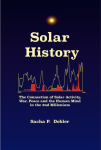




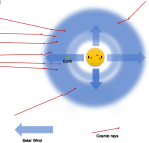

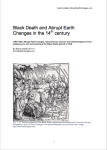

![Kp-Index [0-3] Green - Stable/Calm Magnetosphere. [4] Yellow - Unstable Magnetosphere. [5+] Red - Geomagnetic Storm Conditions](https://firebasestorage.googleapis.com/v0/b/carrington-9.appspot.com/o/spaceWeatherNews%2FkpChart.png?alt=media)

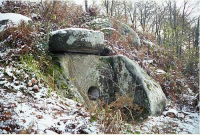
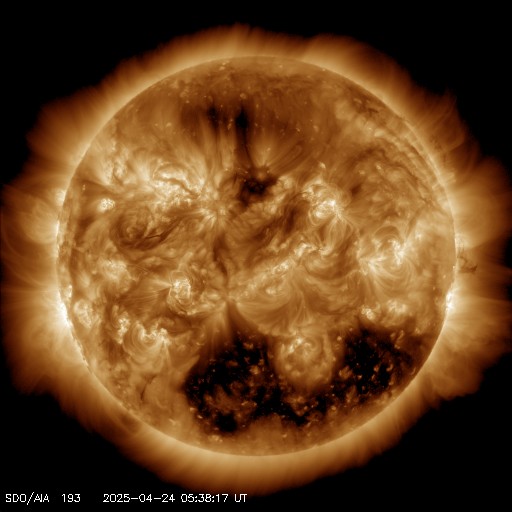

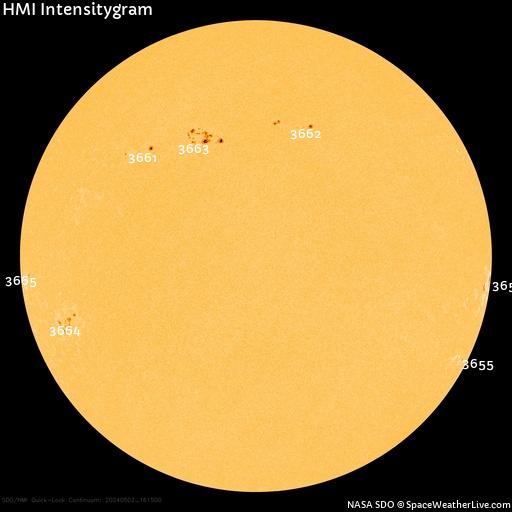
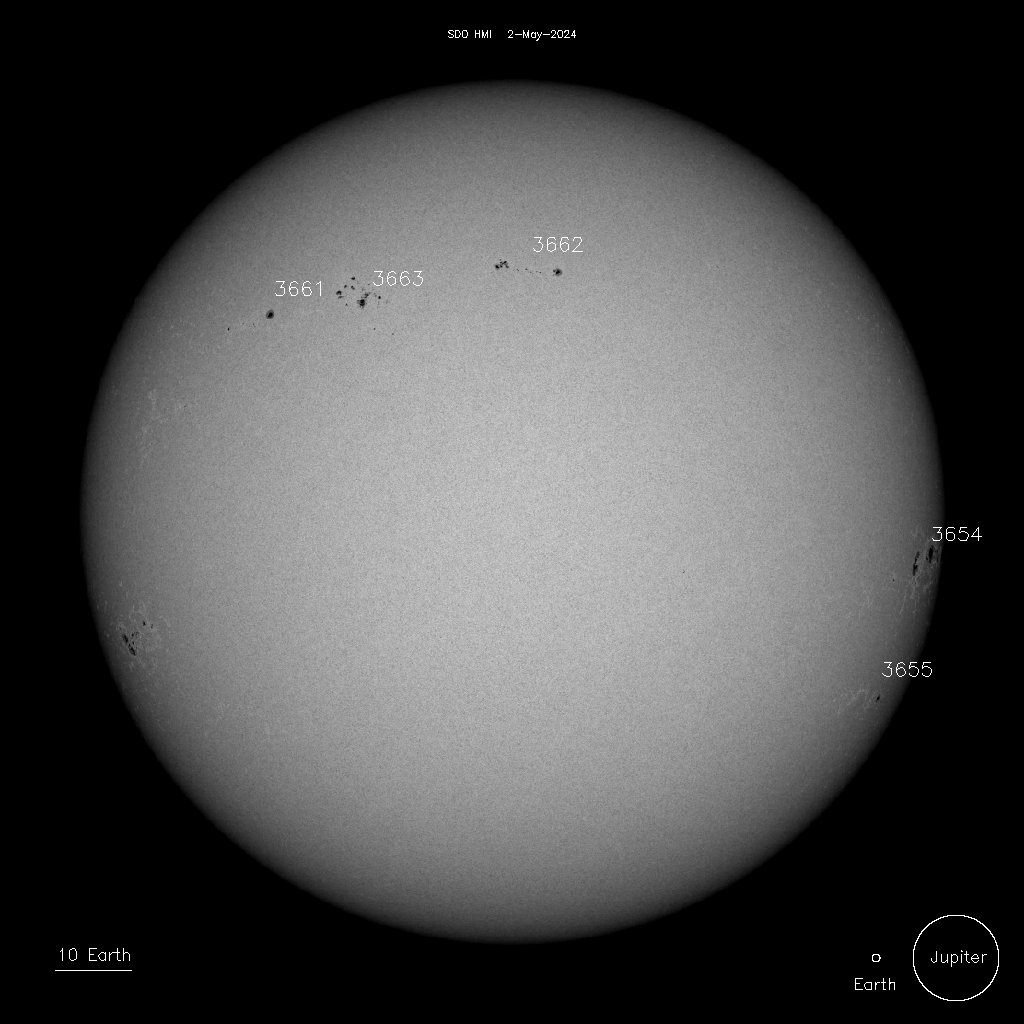

Further support for the use of the term “corn” to describe cereal grains in general were the corn laws in England, which put tariffs on imported grains to support local farmers. The corn laws were put into affect in 1815 and withdrawn some 30 years later due to starvation as local farms were unable to produce sufficient grains and imports were necessary:
The Corn Laws were tariffs and other trade restrictions on imported food and grain (“corn”) enforced in the United Kingdom between 1815 and 1846. The word “corn” in British English denotes all cereal grains, such as wheat and barley.
LikeLiked by 1 person
How can animals predict earthquakes? 20 mins
Follow Rupert (Sheldrake) along with his research assistant David Brown through the streets of Assisi, Italy and Santa Cruz, California as they attempt to figure out how animals have the ability to predict earthquakes. Learn about the current research on the subject in Japan and how interested the Unites States Geological community is interested in using animals to help predict earthquakes.
https://www.sheldrake.org/audios
LikeLiked by 1 person
“In the Middle East both Arabic and Latin sources emphasized that the fourteenth-century Black Death was initially accompanied by violent events like floods, famine and earth¬quakes. In his discussions of plague, the Arabic medical writer Ibn Sina noted that one sign of its approach was rats and subteranean animals fleeing to the surface of the earth and behaving as if intoxicated. Then they would die. It was believed that animals perceived the evil miasma that brought disease before humans did.”
Rat by Jonathan Burt REAKTION BOOKS
LikeLike
I should have added…I have Bruce M.S. Campbell’s “The Great Transition – Climate, Disease and Society in the Late-Medieval World”.. I think this event is so underrated. I think the impact is far greater then the “Black Plague”. I think the “plague” was the final nail and not the beginning…..just musing here today.
LikeLike
On the feasibility of earlier atlantic crossings see also page 72-73 of this e-book.
LikeLike
A person should be looking at Rosslyn Chapel for carved pics of “corn”…..
http://www.rosslynchapel.com/visit/things-to-do/identify-the-plant-carvings/
LikeLike
Very good, thank you for keeping a watchful eye. It’s a direct quote from Kim, Shin (2007) referring to Lamp (1972), in this context corn meaning: Brit. Engl.: cereal crop or the chief cereal crop of a district, especially (in England) wheat or (in Scotland) oats. I’ll make a note in an updated version.
Sacha Dobler
Gesendet: Mittwoch, 31. Mai 2017 um 06:47 Uhr Von: "Abrupt Earth Changes" <comment-reply@wordpress.com> An: sachadobler@gmx.net Betreff: [Abrupt Earth Changes] Comment: "Black Death and Abrupt Earth Changes in the 14th century"
LikeLike
Very good, thank you for keeping a watchful eye. It’s a direct quote from Kim, Shin (2007) referring to Lamp (1972), in this context corn meaning:
Brit. Engl.: cereal crop or the chief cereal crop of a district, especially (in England) wheat or (in Scotland) oats.
I’ll make a note in an updated version.
LikeLiked by 1 person
Check your date (1300 ???) when corn was cultivated in Europe. Corn didn’t arrive until around the time of Columbus or other new world explorers , approx 1490’s.
LikeLike